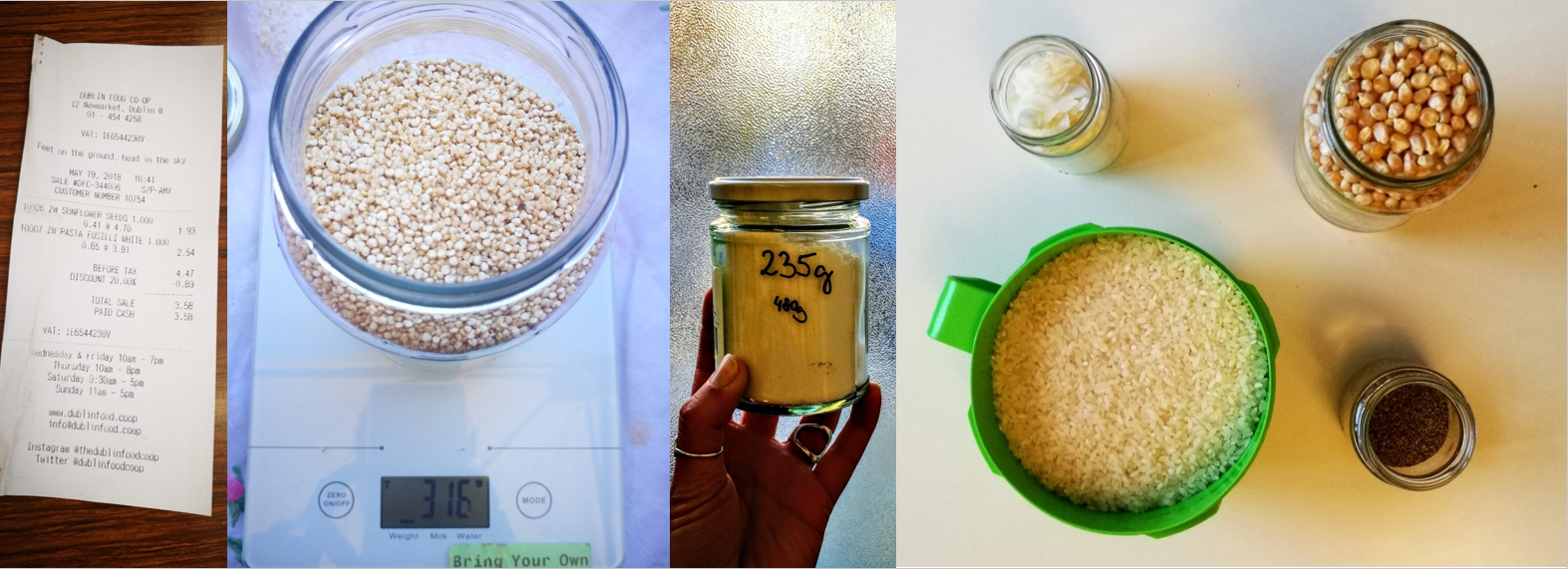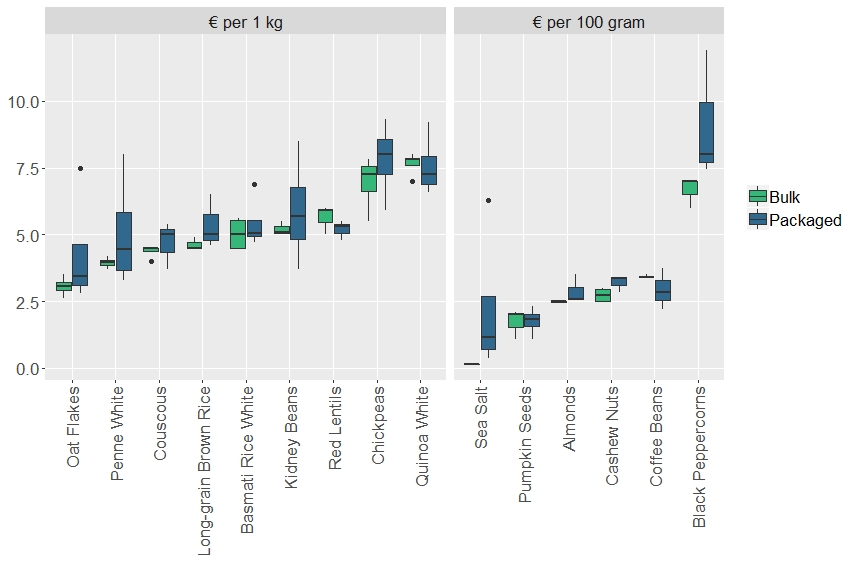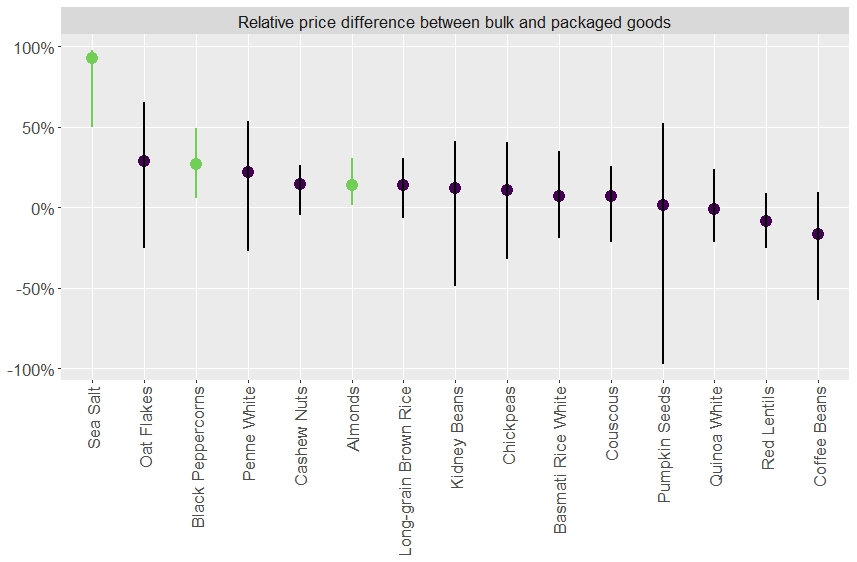Celia's Adventures
in research, zero waste living and discovering the world
Is zero waste living expensive? - Dry goods

Hey hey!
‘Zero waste shopping must be more expensive than conventional one!’
‘Zero waste living is just for the rich!’
What if I tell you it is possible to save money by buying certain products and in bulk straight into your containers???
To note, all dry goods are organic in this mini research study and I collected the data from shops, stalls in Dublin and from Irish online stores. Sadly, it is pointless to compare organic with non-organic prices and I am not here to convince you to buy exclusively organic products. I do not do that myself, but I try to buy organic where I can afford to buy organic.
So at first only for my own use, I decided to put together a database (yeah I cannot deny my nerdy side) of products available package-free in Dublin together with their prices so I can see what I should buy where to save some money (PhD life… yeah!!!). After I realised actually other Dubliners could benefit from this research, you can find the list in a previous blog post here.
I do not intend to share the price differences between the different package-free shops; go, buy your dry goods and support them all!
However, I took my time and I collected data from some ‘conventional’ health and food stores (the ‘packaged’ section of the Dublin Food Coop, Nourish and The Organic Supermarket). I wanted to see what is actually the difference price-wise between shopping package-free and packaged.
I sourced data from the websites/facebook sites of the stalls/stores, except of the DFC, they do not have their list online, so it is based on what was available in their store at the beginning of May.
Bulk - Bare Necessities , Bring Your Own , Minimal Waste Grocery and Dublin Food Coop
Packaged - Dublin Food Coop , Nourish and The Organic Supermarket
I selected products available at least in 3 zero waste and 3 conventional stores.
The first graph shows a boxplot. If you do not know what is a boxplot click here . The green is for bulk and blue for packaged prices. For better visualisation I divided them into two groups, price pre 1 kg and price per 100 gram.

We can see that there is higher variation in price for the packaged products than for bulks. Some of the products (oat flakes, long-grain brown rice, Basmati rice, chickpeas, sea salt, almonds, cashes, and black peppercorns) is available in bulk for the lowest price. And except of red lentils and pumpkin seeds, all the other products have higher median price in packaged form.
In graph below, we can see the relative price difference in percentage between the bulk and packaged goods to see how much we can save or need to invest if we want to buy package free. The dots show the mean difference. You can quickly identify the two extreme cases: While you can save 90% on average when buying loose salt compared to the packed version, for coffee, however, the unpackaged option will set you back 15% more on average compared to the loose alternative. The lines show the upper (the lowest bulk price versus the highest packaged price) and lower limit (the highest bulk price versus the lowest packaged price).

I found three products where you can definitely save money. The ultimate winner is salt. There is no excuse here, we all should head out and buy our sea salt from one of the package free places! Second one is black peppercorns. We all have an existing pepper grinder. Next time when you run out of pepper just bring your grinder and get it refilled! And in third place is almonds… yum. One more reason to eat almonds(-:
So no more excuses! You do not need to buy all package free and or organic. Make your own small steps. Start with salt or black peppercorns and buy some almonds if you are already there (-;
Bulk is beautiful!
Written on June 15th, 2018 by Celia Somlai